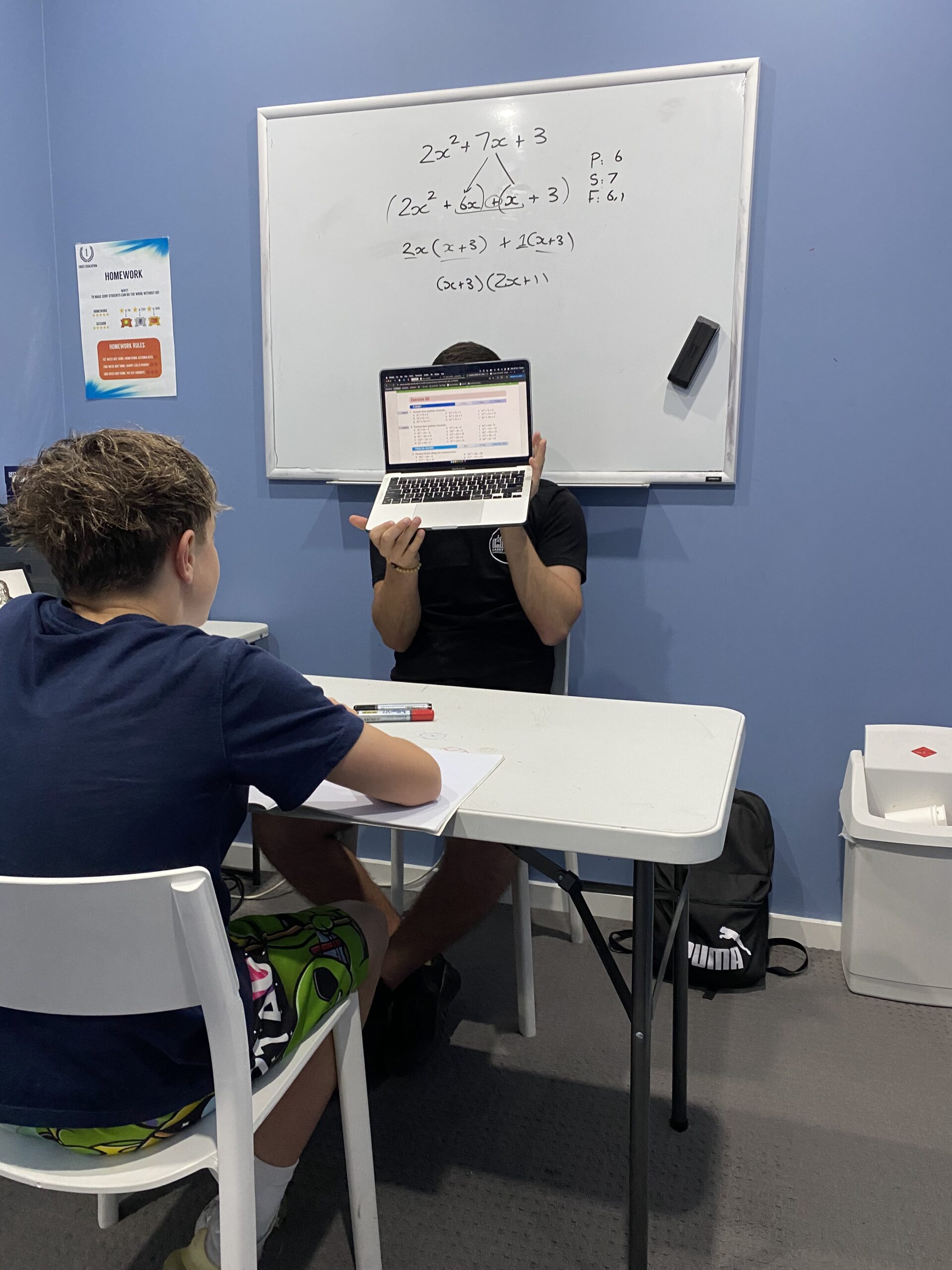
In today’s observation, I watched David teach a Year 9 student how to factorise non-monic quadratics. The session was engaging and well-structured, providing insight into effective teaching strategies for complex algebraic concepts.
The lesson began with a brief review of basic factorisation, ensuring the student had a solid foundation. David then introduced the idea of non-monic quadratics quadratics where the leading coefficient is not equal to 1 (e.g. 2x^2 + 5x + 3). The student had limited confidence with this topic to begin with however, David’s approach was encouraging and educational.
He started by explaining the general form of non-monic quadratics, highlighting the need to break down the middle term by finding two numbers that multiply to the product of the leading coefficient and the constant term. David demonstrated this process step by step, breaking down the process of multiplication and factoring. He emphasised the importance of finding the right pair of factors and using this to split the middle term correctly.
The student struggled briefly with identifying the correct factor pairs, but David patiently guided them through the logic. He used visual aids, such as writing down the factors on the board, which helped clarify the process. They then moved into grouping terms and factoring them step by step. By using both numerical and graphical representations, David made sure the student could see the connection between the algebraic process and the quadratic graph.
The key takeaway from the session was the importance of patience and clear, structured guidance. David’s method not only helped the student understand the process of factorisation but also built their confidence in tackling more complex algebraic problems. It was clear that through this approach, the student began to develop a deeper understanding of quadratic equations, and their confidence towards these problems increased.
James Maatouk

